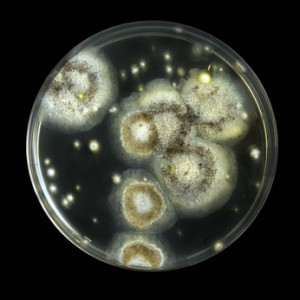What Do Mold Spores Look Like?

If You’re Allergic to Mold, Knowing What Mold Smells Like can Save you an Allergic Reaction.
There are well over 1,000 different types of mold. It can grow anywhere that it has moisture, food, and the right temperature. This fungus is so common that you may take it for granted when you see it under a sink or growing along the exposed floor joists in your basement or crawl space. Don’t ignore mold.
Mold spores
Mold spreads and reproduces via spores. These spores are tiny; three to 40 microns. That is too small to be seen with the naked eye. These tiny spores easily become airborne and cause allergic reactions in some people. A 2004 study by the Institute of Medicine (IOM) found evidence that exposure to indoor mold could cause respiratory illnesses in otherwise healthy children.
Dangers of mold spores
Since mold often grows in out of the way places and the spores are too tiny to be seen, mold can thrive and cause health issues for building occupants without them realizing the source. Spores may cause eye irritation, sore throat, headaches, skin irritations, or other symptoms that compromise a person’s quality of life and later lead to more serious illness. Unless a doctor specializes in mold-related illness, they may give an incorrect diagnosis that leads to ongoing suffering and frustration.
The best solution
A report by the Consumer Product Safety Commission (CPSC) estimates that as many as 50% of all U.S. buildings have water damage or moisture conditions that could lead to mold growth and illness from mold spores. The experts at Stern Mold have more than 20 years experience effectively treating mold and protecting properties from future mold problems. Contact us today for a free inspection and consultation.
